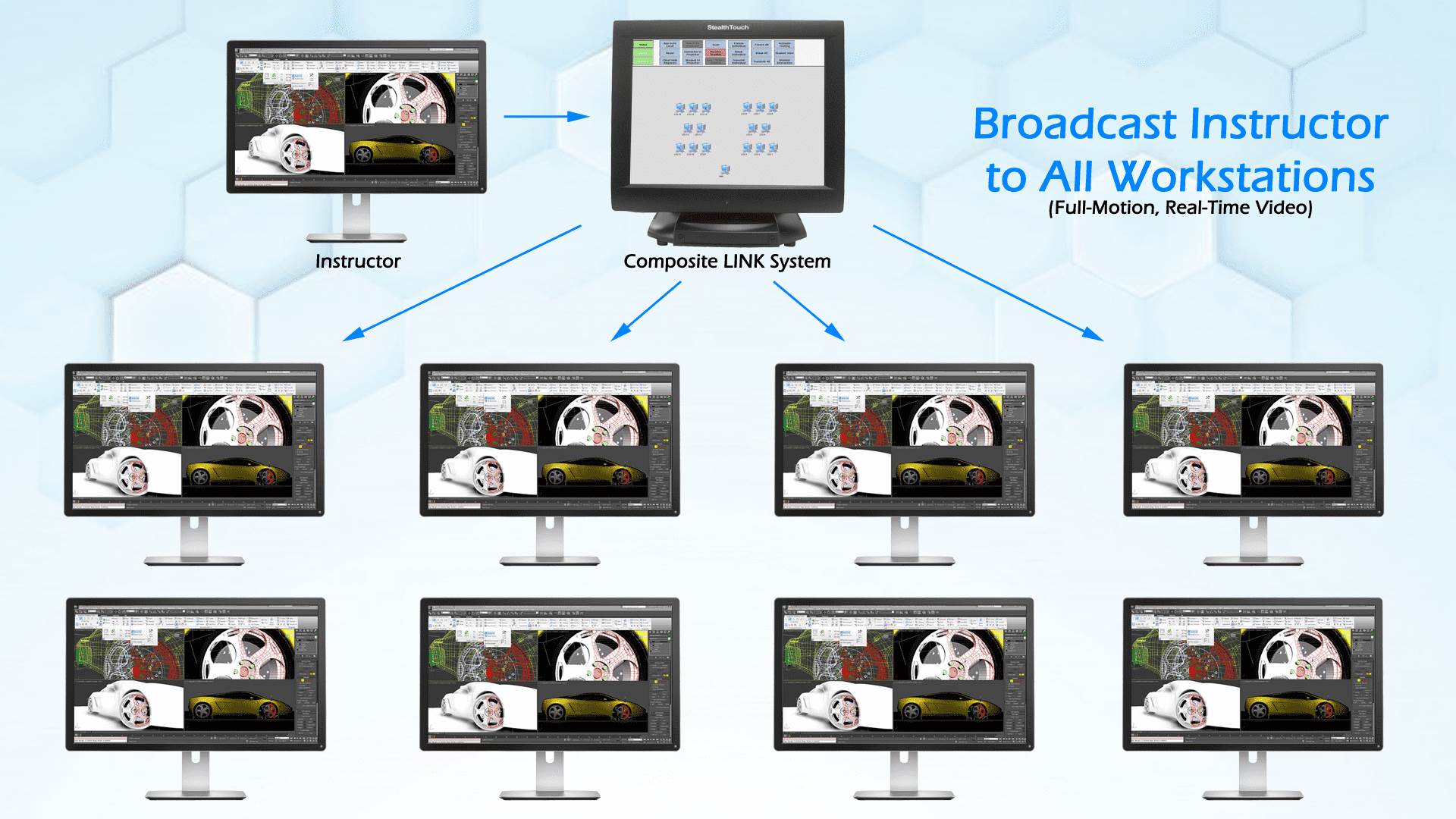Over the years, teachers have come to expect certain teaching aids to be in their classrooms. Not so many years ago, teachers relied on blackboards and chalk to convey their lessons to their classes. They also utilized pull-down maps and hanging diagrams to further enhance their students’ learning experience. By the late 1950’s, schools began to use overhead projectors as an effective means to teach material to students. It allowed teachers to present preprinted material to their class or to write directly onto re-usable plastic sheets using non-permanent ink. By the 1990’s, schools started replacing chalk boards with white boards and then later, with smart boards. They also began replacing overhead projectors with document cameras.
These same teaching tools have been used in computer classrooms for years as well. However, none allowed the teacher to efficiently show a classroom full of students a computer screen. This led to video projectors becoming a mainstay in computer classrooms. With a video projector, teachers could now project their computer screen onto the projection screen, allowing the entire class to see what was being done on the instructor’s computer. This was a huge improvement over all the prior techniques. There are some major inconveniences that go along with video projectors. First and foremost, visibility has always been an issue in the classroom. Whether you are using a smart board, a document camera, or a video projector, not every student in the classroom will have a perfect view of the presented material.
So how can a teacher allow each and every student to have the best view in the class? A classroom management solution offers a perfect front row view to each and every student. How is that possible? Take a teacher who uses a typical computer classroom equipped with a video projector as an example. The teacher would project the instructor’s computer image to the screen at the front of the class. Every student would be able to see the image, but to varying degrees of clarity. There are many factors affecting how clear the image appears. There is the viewing distance, the viewing angle, the ambient lighting, not to mention any obstructions that might be in the classroom. Depending on the classroom layout, an obstruction could simply be a student that is just slightly taller than the student sitting behind them.

Compare the previous scenario to a computer classroom that uses a LINK Classroom Management System. The teacher selects a button and the instructor’s image is broadcast directly to the students’ monitors. There is no decrease in the video quality; the video is broadcast at exactly the same size as it appears on the instructor’s monitor. Sometimes students can more easily associate with the information when it is presented on a normal sized screen and not a larger than life one. Furthermore, the student can adjust the settings of their own monitor to obtain a view to their own liking. The student’s view can never be blocked, the lighting in the classroom will never interfere with their view, and distance is no longer a problem!
Classroom management solutions allow for teachers to engage students in a way that no prior technology allowed for. They now feel as though the information is being presented to them personally, on their own screen, directly in front of them. What if you already have a video projector in the classroom? It will work in conjunction with a LINK Classroom Management System, and if a projector is not present, a classroom management system is capable of doing much more for much less.